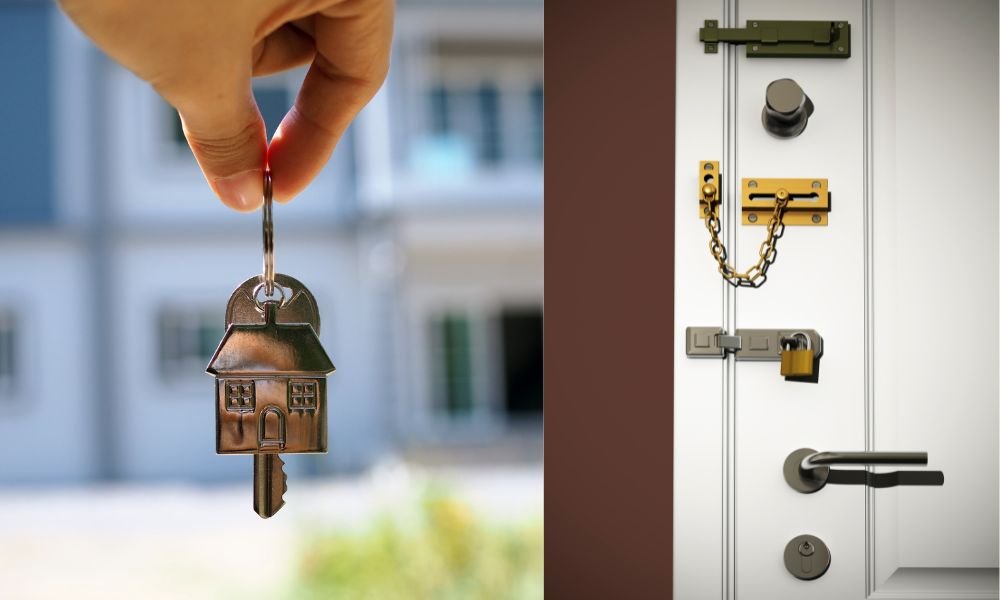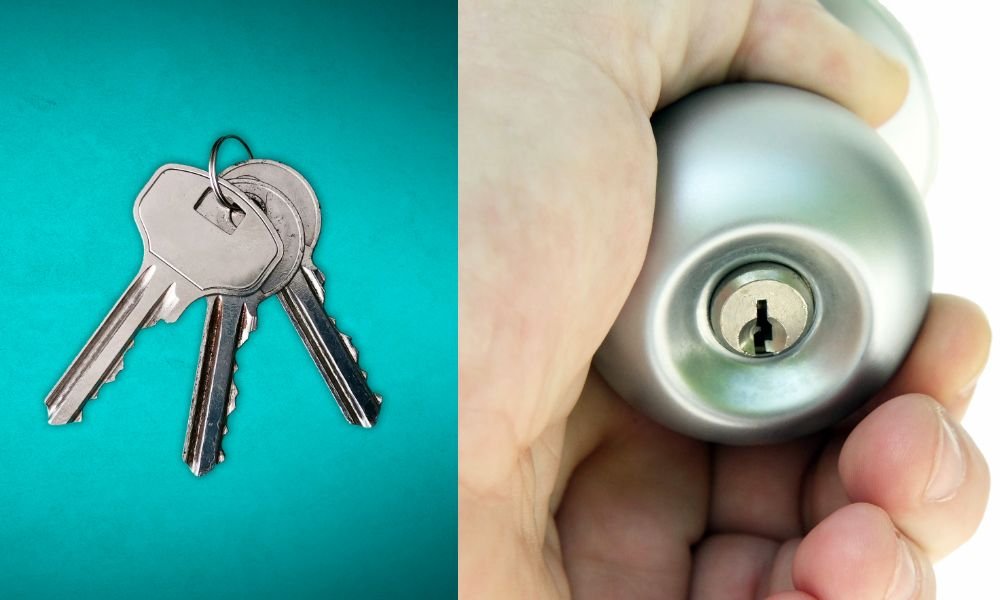Removing a door knob may seem simple, but the process can vary depending on the type of knob and the age of the hardware. Whether you’re upgrading to a more modern design, repairing a mechanism, or simply changing the style to better match your decor, it’s important to understand the specific types. Traditional knobs with visible screws might be straightforward, but others with hidden mechanisms can be tricky. From identifying the kind of knob you have to deal with stubborn screws and stuck latches, we’ve got you covered. Properly releasing the latch is crucial for ensuring the new hardware fits and functions correctly. This guide will walk you through the essential steps of how to remove a door knob efficiently and safely.
Tools and Materials You Will Need
Before diving into the removal process, it’s essential to gather all the necessary tools and materials. Proper preparation will streamline the process, make it more efficient, and help prevent any interruptions that could slow you down. Having everything on hand ensures you can move from one step to the next without needing to pause and search for a tool. Here’s what you’ll need:
- Screwdriver: Most door knobs will require either a Phillips or flathead screwdriver. Ensure you have both types available, as you may encounter different screws.
- Allen Wrench: Some modern door knobs, especially those with a sleeker design, might use an Allen wrench for installation and removal. Having a set of these handy will be beneficial.
- Paper Clip or Pin: A small, sturdy item like a paper clip or pin can be incredibly useful for knobs with hidden detents or screws. These are often used to release a spring mechanism.
- Lubricant: A good lubricant can help ease the removal of stuck or rusted parts. It’s always a good idea to have this on hand, especially if the handle hasn’t been serviced in a while.
- Safety Glasses: Protecting your eyes is crucial when working with tools and hardware. Safety glasses will shield your eyes from any potential debris or accidental contact with sharp tools.
Identify the Type of Door Knob

The first step is to remove and identify the type you have. This is crucial because different types of knobs may have different removal methods. The common types include traditional door knobs with visible screws, hidden screw door knobs, keyed entry knobs, passage knobs, and privacy knobs. By recognizing the type, you can determine the appropriate tools and techniques needed for removal.
Locate the Screws
For most traditional door knobs, the screws are visible on the faceplate. Use a screwdriver to remove these fasteners. If your handle has hidden screws, look for a cover plate that may be concealing them. This cover plate often twists off or can be gently pried off with a flathead screwdriver. Once removed, the fasteners holding the knob in place will be exposed.
Unscrew the Knob
Once these are visible, use the appropriate screwdriver to remove them. Turn the screws counterclockwise to loosen them. Carefully pull the knobs apart, separating them from the door. In some cases, you may need to hold the exterior handle steady while unscrewing the interior knob.
Release the Latch
With the knob removed, the next step is to release the latch mechanism located at the edge of the door. Begin by locating the screws on the faceplate that secure the latch. Using the appropriate screwdriver, carefully unscrew these fasteners by turning them counterclockwise. Once these are removed, gently pull the latch out of the door. If the latch is stuck, avoid forcing it to prevent damage. Instead, apply a small amount of lubricant to the mechanism and let it sit for a few minutes to loosen any debris or rust. Then, gently work the latch free. Properly releasing the latch is crucial for ensuring the new hardware fits and functions correctly.
Remove the Strike Plate

The strike plate is located on the door frame and holds the latch when the door is closed. To remove it, locate the screws on the strike plate and unscrew them. Once the screws are removed, the strike plate should come off easily.
Clean the Area
After removing the knob, latch, and strike plate, it’s crucial to clean the area thoroughly. This step ensures that any subsequent installation or repair work will be done on a pristine surface. Begin by wiping down the door and the surrounding areas with a damp cloth to remove any dust, dirt, or debris that may have accumulated during the removal process. Pay special attention to the areas where the hardware was attached, as these spots can often collect more residue. Additionally, inspect the door for any damage or wear that might need addressing before you proceed with a new installation.
Troubleshooting Common Issues
Sometimes, removing a door knob can present unexpected challenges. Here are a few common issues and how to address them:
- Stuck Knob: If the handle is stuck, apply a lubricant to the screws and latch mechanism. Allow it to sit for a few minutes, then try again. Gentle tapping with a rubber mallet can also help loosen a stuck knob.
- Stripped Screws: If the fasteners are stripped and difficult to remove, use a screw extractor tool. This tool grips the stripped fasteners and allows you to remove them without damaging the door.
- Hidden Screws: If you can’t find the screws, check for a hidden release mechanism or detent. Use a paper clip or pin to press the release and remove the knob. Sometimes, the fasteners are hidden under a decorative cover or behind the faceplate.
Safety Tips
When working on any DIY project, safety should always be a priority. Here are some safety tips to keep in mind while removing a door knob:
- Wear Safety Glasses: Protect your eyes from any flying debris or accidental contact with tools.
- Use the Right Tools: Ensure you have the correct screwdriver or Allen wrench for the job. Using the wrong tool can damage the screws or the knob.
- Be Gentle: Avoid forcing any parts, as this can damage the door or knob. If you encounter resistance, apply a lubricant or re-evaluate your approach.
Conclusion
Removing a door knob is a straightforward task when you understand the process and have the right tools. Whether you’re upgrading, repairing, or simply changing the style, following these steps will ensure a smooth and efficient removal. By identifying the type of knob, locating and removing the screws, releasing the latch, and removing the strike plate, you can complete the task with confidence.
Remember, patience and attention to detail are key. Take your time, follow the steps carefully, and address any issues methodically. With the right approach, you can handle this DIY project and prepare your door for whatever comes next.



